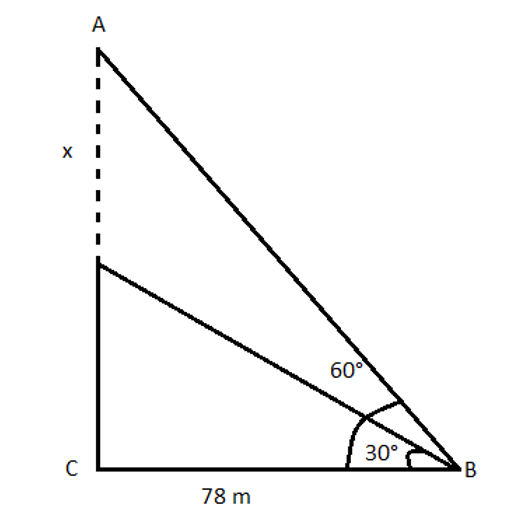Question
The angle of elevation of the top of an unfinished tower
at a point distant 78 m from its base is 30°. How much higher must the tower be raised (in m) so that the angle of elevation of the top of the finished tower at the same point will be 60°?Solution
 Here, OC = Height of the unfinished tower AC = The height will be the finished tower's height In ΔOBC, tan 30° = OC/BC ⇒ 1/√3 = OC/78 [∵ tan 30° = 1/√3] ⇒ OC = 78/√3 ⇒ OC = (78 × √3)/(√3 × √3) = 26√3 .....(1) Let, the height of the tower will be raised (AO) = x In ΔABC, tan 60° = AC/BC ⇒ √3 = (OC + x)/78 [∵ tan 60° = √3] ⇒ x + OC = 78√3 ⇒ x + 26√3 = 78√3 ⇒ x = 78√3 - 26√3 = 52√3
Here, OC = Height of the unfinished tower AC = The height will be the finished tower's height In ΔOBC, tan 30° = OC/BC ⇒ 1/√3 = OC/78 [∵ tan 30° = 1/√3] ⇒ OC = 78/√3 ⇒ OC = (78 × √3)/(√3 × √3) = 26√3 .....(1) Let, the height of the tower will be raised (AO) = x In ΔABC, tan 60° = AC/BC ⇒ √3 = (OC + x)/78 [∵ tan 60° = √3] ⇒ x + OC = 78√3 ⇒ x + 26√3 = 78√3 ⇒ x = 78√3 - 26√3 = 52√3
More Mensuration Questions


